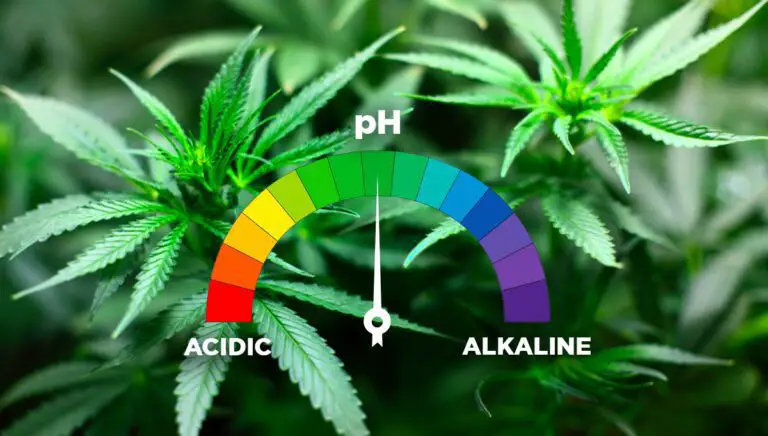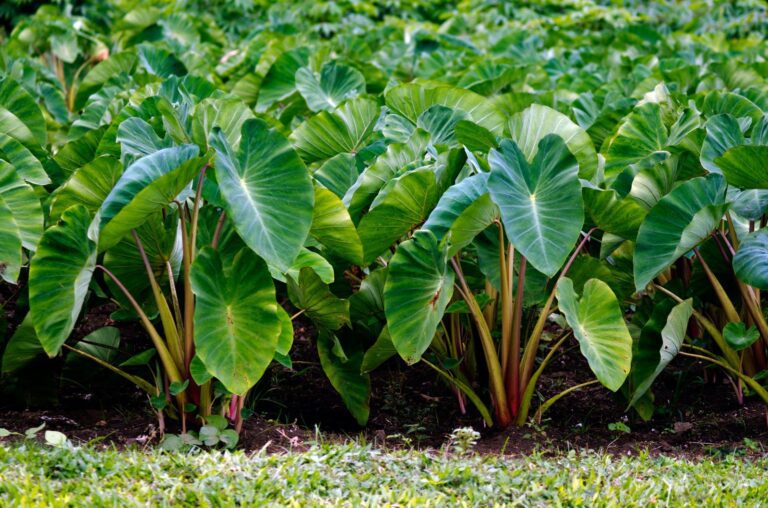Perpetual Harvest: How to Grow Cannabis Non-Stop and Harvest Every Month
Understanding the Concept of Continuous Cannabis Harvesting
Continuous cannabis harvesting is a concept that revolutionizes the way cannabis cultivators approach their crops. Unlike traditional harvesting methods that involve harvesting the entire crop at once, continuous harvesting allows for a perpetual cycle of growth, ensuring a steady supply of cannabis year-round. This innovative approach aims to maximize efficiency and productivity, providing a consistent stream of fresh cannabis buds.
The concept behind continuous cannabis harvesting is simple yet highly effective. Rather than waiting for an entire crop to mature before harvesting, cultivators strategically stagger their planting and harvesting schedules. By doing so, they create a perpetual cycle where plants at different stages of growth coexist in the same cultivation space. This means that as one batch of plants reaches the harvesting stage, another batch is just beginning its journey, ensuring a continuous supply of cannabis.
Continuous cannabis harvesting offers several benefits to both commercial and home growers. For one, it allows cultivators to maximize their space and resources by ensuring a constant rotation of plants. Additionally, it offers a more stable and reliable source of cannabis, eliminating the need to rely on seasonal variations or long waiting periods between harvests. Furthermore, continuous harvesting allows cultivators to experiment with different strains and cultivation techniques, as they have the flexibility to introduce new plants regularly and fine-tune their methods for optimal results.
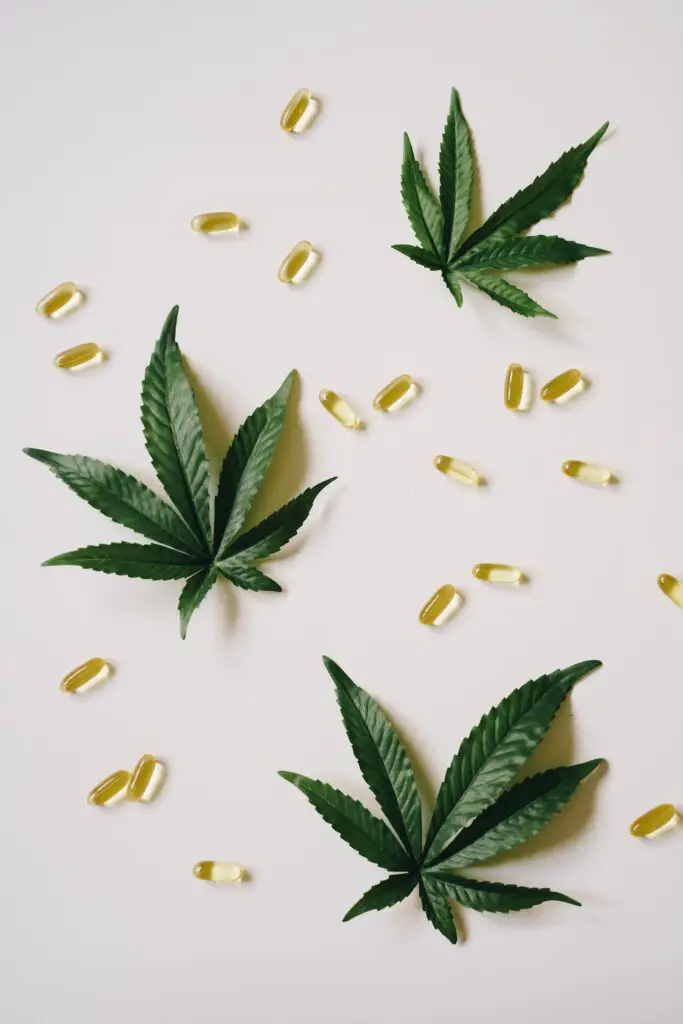
In the next sections of this article, we will explore the various aspects of continuous cannabis harvesting, from selecting the right strains to creating an ideal growing environment, as well as mastering techniques for seed germination and cloning, optimal lighting, nutrient solutions, pest management, and more. We will dive deep into each topic, providing valuable insights and practical tips to help cultivators implement and optimize their own perpetual harvest systems. Stay tuned for a comprehensive guide that will empower you to unlock the potential of continuous cannabis harvesting.
Selecting the Right Cannabis Strains for Perpetual Harvesting
When it comes to selecting cannabis strains for perpetual harvesting, there are several key factors to consider. First and foremost is the strain’s flowering time. Since perpetual harvesting relies on a continuous supply of mature plants, choosing strains with shorter flowering periods will ensure a more efficient and timely process. This way, you can maintain a steady rotation and avoid lags in production.
Additionally, it is essential to select strains that are well-suited for the growing environment in which you’ll be cultivating. Factors such as temperature, humidity levels, and lighting conditions can vary, so it’s crucial to choose strains that can thrive in these specific conditions. Researching the genetic lineage and characteristics of different strains will help you identify those that are best suited for perpetual harvesting in your particular setup. By understanding the specific needs and traits of various cannabis strains, you can make informed decisions that will optimize your perpetual harvesting system for success.
Creating an Ideal Environment for Non-Stop Cannabis Growth
Creating an ideal environment for non-stop cannabis growth is crucial for ensuring healthy and productive plants throughout the year. One of the key factors to consider is temperature control. Cannabis plants thrive in a temperature range of 70°F to 85°F (21°C to 29°C) during the day, and slightly cooler temperatures of 65°F to 75°F (18°C to 24°C) at night. Maintaining a consistent temperature within this range helps promote optimal growth and prevents stress on the plants.
Another important aspect of creating an ideal environment is controlling humidity levels. High humidity can lead to the growth of mold and mildew, while low humidity can cause the plants to dry out. Aim for a humidity range of 40% to 60% during the vegetative stage, and reduce it to around 30% to 50% during flowering. Using dehumidifiers or humidifiers can help regulate humidity levels and create a more stable environment for your cannabis plants.
The below mentioned table provide details on Ideal Environmental factors for Non-Stop Cannabis Growth:
| Stage | Temperature | Humidity Range | CO2 | Light Schedule | Light Intensity | PH Range | EC Range |
|---|---|---|---|---|---|---|---|
| Propagation | 65 – 70 °F (16 – 21 °C) | 50 – 70% | 400 PPM | 18 Hour cycle | N/A | 5.8 – 6.3 | 1.5 – 2.5 |
| Vegetative | Daytime 76 – 78°F (24.4 – 25.5 °C), Nighttime 65 – 68°F (18.3 – 20°C) | 50 – 75% | 700 – 1,200PPM | 18 Hour Cycle | 600 – 900 μmols | 5.8 – 6.3 | 1.5 – 2.5 |
| Flower | Daytime 72 – 85°F (22.2 – 29 °C), Nighttime 55 – 70°F (12.7- 21.1 °C ) | 45 – 60% | 400 – 1,500PPM | 12 Hour Cycle | N/A | 5.8 – 6.2 | 2 – 2.5 |
Proper air circulation is also essential for non-stop cannabis growth. Good airflow helps prevent the buildup of heat, moisture, and stagnant air, which can all contribute to the growth of pests and diseases. Investing in oscillating fans or ventilation systems can help improve air circulation within the grow space, ensuring fresh air reaches every part of the plants.
In addition to these key factors, it’s important to consider other environmental elements such as light intensity, CO2 levels, and the pH of the growing medium. Creating a well-balanced and optimized environment will provide the ideal conditions for non-stop cannabis growth and maximize your yields.
Essential Equipment and Supplies for Perpetual Cannabis Cultivation
In order to ensure a successful and continuous cannabis cultivation process, it is crucial to have the right equipment and supplies. Investing in high-quality tools and materials will not only enhance the efficiency of your operation, but also contribute to the overall health and vigor of your plants.
One essential piece of equipment for perpetual cannabis cultivation is a reliable grow tent or grow room. These enclosed spaces provide a controlled environment where you can regulate temperature, humidity, and light levels to optimize plant growth. Additionally, they help to keep pests and diseases at bay, ensuring a healthier and more productive crop.
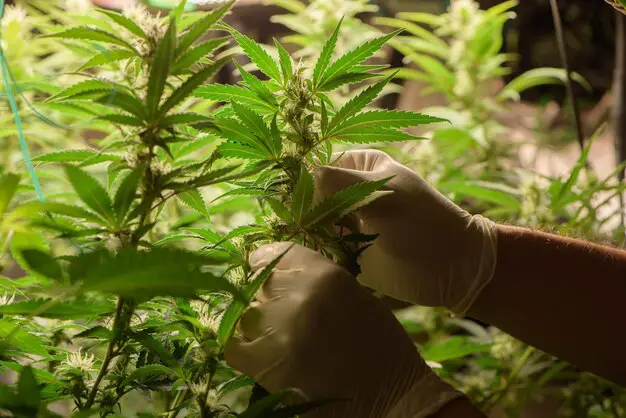
Another important component is a suitable lighting system. LED grow lights have proven to be highly effective in providing the necessary light spectrum for cannabis plants throughout their growth cycle. These lights are energy-efficient, produce less heat, and can be customized to mimic the natural sunlight required for different stages of plant development.
In addition to the above, other essential supplies include high-quality growing medium, such as coco coir or rockwool, nutrient solutions specifically formulated for cannabis, pH meters, ventilation systems for proper air circulation, and a range of gardening tools like pruning shears and trimming scissors.
By investing in the right equipment and supplies, you are setting the foundation for a successful perpetual cannabis cultivation system. These essentials will help you create an environment where your plants can thrive, resulting in healthy and abundant harvests.
Mastering the Art of Seed Germination and Cloning for Continuous Harvests
When it comes to continuous cannabis harvesting, mastering the art of seed germination and cloning is a crucial step in ensuring a consistent and successful yield. By understanding the intricacies of these two techniques, cannabis growers can achieve a perpetual harvest system that allows for a continuous supply of high-quality plants.
Seed germination is the process of initiating growth from a seed, and it is the starting point for many cannabis cultivators. To ensure a successful germination, it is important to provide the seeds with the optimal environment. This includes maintaining a consistent temperature, humidity, and lighting conditions. Additionally, using a high-quality germination medium such as peat pellets or rockwool cubes can greatly increase the chances of successful germination.
Cloning, on the other hand, involves taking cuttings from a mother plant and encouraging them to develop into new plants with identical genetic traits. This provides growers with the opportunity to replicate desirable characteristics, such as high potency or disease resistance, without relying on seeds. To successfully clone cannabis plants, it is important to select a healthy and vigorous mother plant, properly prepare and sterilize the equipment used for cuttings, and provide the clones with the right conditions for rooting, such as a humidity dome and the correct nutrient solution.
Mastering seed germination and cloning techniques is an essential skill for any cannabis cultivator looking to achieve continuous and consistent harvests. By understanding the principles behind these methods and implementing them properly, growers can ensure a steady supply of high-quality plants throughout the year.
Implementing Effective Lighting Techniques for Year-Round Cannabis Production
When it comes to year-round cannabis production, implementing effective lighting techniques is crucial for providing the optimal environment for your plants. The right lighting can ensure consistent growth and development, regardless of the season or outdoor conditions.
One of the most popular lighting options for indoor cannabis cultivation is high-intensity discharge (HID) lighting. HID lights, such as metal halide (MH) and high-pressure sodium (HPS) bulbs, emit a strong spectrum of light that closely mimics natural sunlight. These lights are known for their high output and efficiency, making them ideal for large-scale commercial operations. However, they can generate a significant amount of heat, so proper ventilation and cooling systems must be in place to maintain the ideal temperature for your plants.
Alternatively, light-emitting diode (LED) lighting has gained popularity in recent years for its energy efficiency and customizable spectrum. LED lights can be fine-tuned to provide the specific wavelengths of light that are most beneficial to cannabis plants during each phase of growth. They also produce less heat, reducing the need for extensive cooling systems and saving on energy costs. Additionally, LED lights have a longer lifespan, which translates to less frequent bulb replacements and lower maintenance expenses. Consider your specific needs and budget when choosing the right lighting option for your year-round cannabis production.
Optimizing Nutrient Solutions for Non-Stop Cannabis Growth
Optimizing nutrient solutions is a crucial aspect of non-stop cannabis growth. By providing the right blend of essential elements, you can ensure robust plant development and maximum yields throughout your perpetual harvest system. Nutrients play a vital role in every stage of the cannabis growth cycle, from seedling to flowering, and even during the vegetative phase in between.
To optimize your nutrient solutions, it is essential to understand the specific nutrient requirements of cannabis plants at different growth stages. Nitrogen, phosphorus, and potassium (NPK) are the primary macro nutrients needed in varying proportions during vegetative and flowering phases. Additionally, secondary macro nutrients like calcium, magnesium, and sulfur, as well as micro nutrients such as iron, zinc, and copper, are also crucial for healthy plant growth.
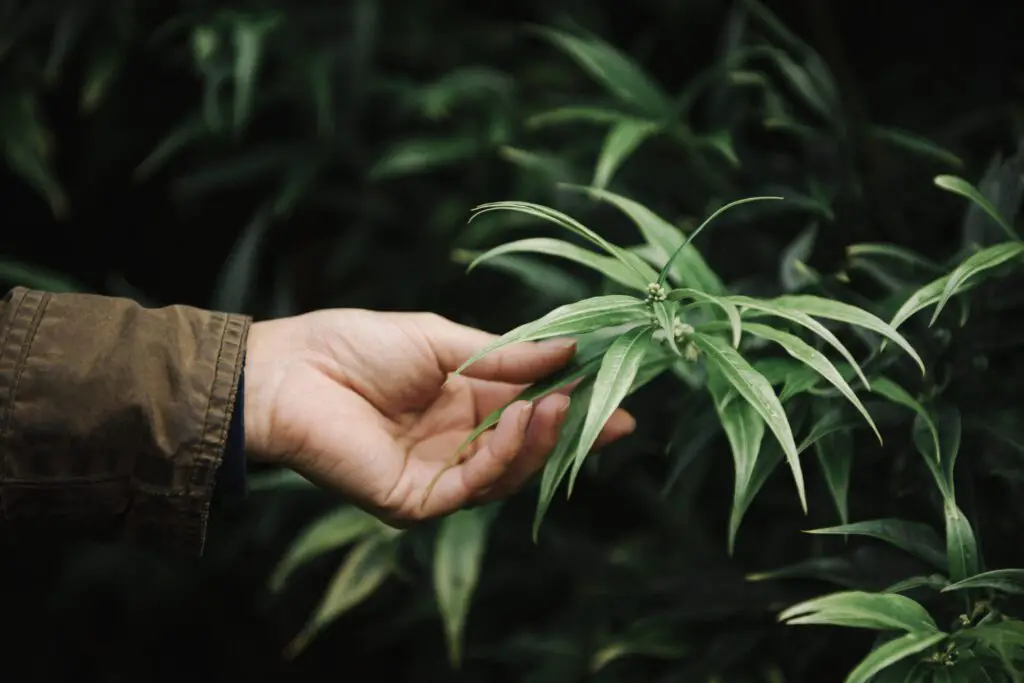
Balancing these nutrients is key to preventing deficiencies or excesses that can hinder plant development. Monitoring pH levels is equally important as it affects nutrient availability to the plants. pH values outside the optimal range can lead to nutrient lockout or toxicity, impeding growth and overall plant health. Through regular testing and adjustments, you can fine-tune your nutrient solution to ensure an ideal pH range for optimal nutrient uptake.
Moreover, selecting high-quality nutrient solutions designed specifically for cannabis cultivation can greatly enhance the overall success of your perpetual harvest system. These specially formulated solutions provide the perfect combination of macro nutrients, micro nutrients, and beneficial additives to meet the unique nutritional needs of cannabis plants. Whether you choose a hydroponic, soil-based, or organic approach, investing in reliable and reputable nutrient solutions will significantly contribute to non-stop cannabis growth.
Pest and Disease Management Strategies for Perpetual Harvesting
Pests and diseases can be detrimental to any cannabis cultivation, and in a perpetual harvesting setup, it is crucial to have effective strategies in place to manage these threats. Preventive measures play a key role in minimizing the risk of infestations and infections. Maintaining a clean and sterile environment is the first line of defense against pests and diseases. Regularly sanitize all equipment, tools, and growing containers to prevent the spread of pathogens.
Mentioned below is a table on Pest and Disease Management Strategies for perpetual harvesting of cannabis:
| Strategy | Description |
|---|---|
| Integrated Pest Management (IPM) | A comprehensive, coordinated, and integrated approach to prevent or suppress damaging insect pests by applying multiple control tactics. |
| Scouting for pests | Scouting for pests can be performed by humans or software. With a combination of visual inspection and computer vision, the productivity of plants can be optimized, and the application of pesticides can be minimized. |
| Climate control systems | High-performance heating, ventilation, cooling, and dehumidification (HVACD) systems can maintain target environmental conditions that can prevent the growth of pest populations. You can use mechanisms such as filtration, light treatments, and photocatalytic oxidation to control outbreaks. |
| Cultural, physical, biological, and chemical tactics | Growers can use various strategies to avoid and control pests, including cultural, physical, biological, and chemical tactics. For example, quarantining infected plants, removing infected plant matter, treating plants with organic insecticides, essential oils, or insecticidal soaps daily until new growth is healthy and unaffected, and using chemical miticides (except during the flowering stage). |
| Healthy soil | The best way to control both pests and diseases is to keep plants healthy. Healthy soil provides a home to friendly insects and helps prevent many plant diseases. Plant resistant varieties. |
| Perpetual Harvest Method | Perpetual harvesting requires a continuous supply of grow medium, such as soil or hydroponic systems. As you maintain plants at different stages, you will need to replace or replenish the grow medium for each new batch of plants. This ongoing need for grow medium can increase your expenses. |
In addition to cleanliness, implementing proper plant nutrition and watering practices can also help strengthen cannabis plants and reduce their susceptibility to pests and diseases. Providing the plants with a well-balanced nutrient solution and ensuring they receive adequate water without creating excess moisture can promote healthy growth and enhance their natural defenses. The use of beneficial insects, such as ladybugs or predatory mites, can also be an effective organic pest control method in a perpetual harvesting system. These natural predators can help keep pest populations in check and prevent major outbreaks without the need for chemical intervention.
• Regularly sanitize all equipment, tools, and growing containers to prevent the spread of pathogens.
• Implement proper plant nutrition and watering practices to strengthen cannabis plants and reduce susceptibility to pests and diseases.
• Provide plants with a well-balanced nutrient solution and ensure they receive adequate water without creating excess moisture.
• Use beneficial insects like ladybugs or predatory mites as an effective organic pest control method in a perpetual harvesting system.
• These natural predators can help keep pest populations in check and prevent major outbreaks without the need for chemical intervention.
Proper Training and Pruning Methods for Maximizing Yields in Continuous Cannabis Cultivation
Training and pruning are essential techniques in maximizing yields and maintaining the health of cannabis plants in continuous cultivation. By guiding the growth and directing the plant’s energy towards the most productive parts, growers can ensure optimal harvests throughout the year.
One effective method of training cannabis plants is through the use of low-stress training (LST). LST involves gently bending and tying down branches to create a more even distribution of light and promote the development of multiple colas. This technique helps to minimize shading and allows for better light penetration, resulting in increased bud production and higher yields. Additionally, LST encourages a more bushy and compact growth pattern, which can be advantageous in limited growing spaces.
Pruning is also crucial for maintaining healthy and productive cannabis plants. Regularly removing unnecessary foliage and unwanted shoots helps to improve airflow and prevent the occurrence of mold or mildew. Furthermore, pruning aids in directing the plant’s energy towards the development of larger, more potent buds. By selectively removing lower branches and leaves that receive less light, growers can enhance light penetration and promote optimal bud growth in the upper canopy. Pruning should be done carefully and strategically to avoid causing stress or damage to the plant.
Timing and Scheduling: Understanding the Importance of Crop Rotation for Monthly Harvests
Crop rotation is a crucial element in a successful perpetual cannabis cultivation system. By understanding the importance of timing and scheduling, you can ensure a continuous supply of high-quality cannabis throughout the year. Crop rotation involves strategically planting different cannabis strains in a rotational sequence, allowing for optimal growth and maximum yield potential.

One key benefit of crop rotation is the prevention of soil depletion and nutrient deficiencies. By rotating cannabis strains, you can mitigate the risk of depleting essential nutrients from the soil, as different strains have varying nutrient demands. This practice also helps to break the life cycle of pests and diseases that may be specific to certain strains, reducing the need for chemical interventions.
In addition to nutrient management and pest control, crop rotation allows for effective timing and scheduling of monthly harvests. By staggering planting dates, you can ensure a continuous rotation of mature plants ready for harvest each month. This strategic planning ensures a consistent supply, meeting the demands of consumers while optimizing resource utilization.
Successful timing and scheduling require careful consideration of strain characteristics, growth cycles, and environmental factors. Choosing strains with similar growth rates and maturation times can help simplify the scheduling process. By planning ahead and maintaining detailed records, you can fine-tune your crop rotation schedule for optimal efficiency and productivity.
In the next section, we will explore the specific techniques and considerations involved in harvesting and curing techniques to preserve the quality of continuous cannabis batches.
Harvesting and Curing Techniques to Preserve the Quality of Continuous Cannabis Batches
Harvesting and curing techniques play a crucial role in preserving the quality of continuous cannabis batches. When it comes to harvesting, timing is key. It is important to wait until the trichomes, or resin glands, on the flowers have reached their peak potency. This is typically indicated by a change in color, from clear to milky white or amber, depending on the desired effect.
Once the plants have been harvested, they need to be cured properly to ensure the preservation of their aroma, flavor, and potency. Curing is the process of removing moisture from the buds while allowing them to develop their desired characteristics. This can be done by hanging the plants upside down in a cool, dry environment with good airflow. The curing process typically takes two to four weeks, but longer curing times can result in even better flavor and smoothness. Properly cured cannabis should be stored in airtight containers in a cool, dark place to maintain its quality over time.
Evaluating and Adjusting your Perpetual Harvest System for Optimal Results
Evaluating and adjusting your perpetual harvest system is crucial for achieving optimal results in your cannabis cultivation. As a gardener and hydroponics expert, it is essential to regularly monitor and analyze various factors to ensure the continuous growth and high-quality yields of your plants.
One important aspect to evaluate is the efficiency of your nutrient solution. Check the pH level and nutrient balance regularly to ensure that your plants are receiving the necessary elements for healthy growth. Conducting regular tests on your solution’s electrical conductivity (EC) will help you understand if any adjustments are needed to maintain the ideal nutrient concentration.
Additionally, evaluating the lighting system is vital in optimizing your perpetual harvest system. Consider measuring the light intensity across your cultivation area using a lux meter or a quantum sensor. This will allow you to identify any areas that may be receiving insufficient or excessive light, enabling you to adjust the setup accordingly. Moreover, monitoring the temperature and humidity levels within the grow space will play a crucial role in creating an ideal environment for your cannabis plants.
By regularly evaluating and adjusting your perpetual harvest system, you can ensure that all the necessary factors are optimized for the highest quality and consistent yields. Being meticulous in your assessments and making timely adjustments will help you achieve the optimal results that every gardening enthusiast desires.
Case Studies: Real-Life Examples of Successful Perpetual Cannabis Harvesting
In the world of cannabis cultivation, the concept of perpetual or continuous harvesting has gained significant popularity among gardeners and cultivators. By implementing a well-planned perpetual harvest system, growers can ensure a consistent supply of high-quality cannabis throughout the year. To illustrate the effectiveness of this approach, let’s explore some real-life examples of successful perpetual cannabis harvesting.
One such example comes from a commercial cannabis facility in California. With meticulous planning and proper timing, this facility has managed to achieve a monthly harvest cycle, resulting in a continuous output of fresh, potent buds. By carefully selecting cannabis strains that have similar flowering periods and growth patterns, the facility has been able to maintain a steady rotation of crops, ensuring a seamless transition from one harvest to the next. This systematic approach has not only maximized their yield potential but also allowed the facility to meet the demands of the market consistently.
Another noteworthy case study comes from a small-scale indoor grower based in Colorado. By utilizing hydroponic techniques and implementing optimized lighting and nutrient solutions, this grower has been able to achieve a perpetual harvest system in a limited space. By carefully monitoring the growth and development of each plant, they were able to maintain a continuous cycle of seeding, cloning, and harvesting while ensuring an efficient use of resources. This success story showcases how even a modest setup can yield impressive results with the right knowledge, techniques, and dedication to perpetual cannabis cultivation.
These case studies highlight the potential of perpetual cannabis harvesting and provide valuable insights for enthusiasts and cultivators looking to adopt this approach. By learning from the experiences and techniques of successful growers, one can gain the knowledge and confidence needed to establish their own continuous harvest system. With careful planning, proper timing, and the implementation of best practices in cannabis cultivation, achieving a steady supply of top-quality buds year-round is well within reach.
To know more about perpetual Cannabis Harvesting watch the video!
What is perpetual cannabis harvesting?
Perpetual cannabis harvesting refers to a cultivation technique where cannabis plants are grown in a way that allows for continuous harvesting throughout the year, ensuring a steady supply of fresh cannabis.
How do you select the right cannabis strains for perpetual harvesting?
When selecting cannabis strains for perpetual harvesting, it’s important to choose strains with fast flowering times, high yields, and the ability to handle frequent pruning. Strains that are known for their resilience and adaptability are also preferred.
What is the ideal environment for non-stop cannabis growth?
The ideal environment for non-stop cannabis growth includes maintaining consistent temperature and humidity levels, proper air circulation, and providing adequate lighting for the plants. It’s also important to ensure a pest-free environment and proper ventilation.
What are the essential equipment and supplies for perpetual cannabis cultivation?
Essential equipment and supplies for perpetual cannabis cultivation include grow lights, climate control systems, irrigation systems, pH and nutrient meters, pots or grow bags, and propagation tools like cloning kits or seed germination trays.
How can you optimize nutrient solutions for non-stop cannabis growth?
To optimize nutrient solutions for non-stop cannabis growth, it’s important to follow a feeding schedule tailored to the different growth stages of the plants. Using high-quality fertilizers and maintaining the right pH levels of the nutrient solution are also crucial.
What pest and disease management strategies are effective for perpetual harvesting?
Effective pest and disease management strategies for perpetual harvesting include regular scouting for pests, implementing preventive measures such as proper hygiene and quarantine procedures, and using organic or chemical treatments when necessary. Integrated Pest Management (IPM) techniques can also be employed.
How can you maximize yields in continuous cannabis cultivation through training and pruning methods?
To maximize yields in continuous cannabis cultivation, training techniques like topping, low-stress training (LST), and screen of green (SCROG) can be employed. Pruning methods such as removing lower branches and defoliating can also help redirect energy towards bud development.
Why is crop rotation important in perpetual cannabis harvesting?
Crop rotation is important in perpetual cannabis harvesting to ensure consistent yields and maintain plant health. By rotating plants and avoiding continuous planting in the same location, you can reduce the risk of pests, diseases, and nutrient depletion.
What are the recommended harvesting and curing techniques for continuous cannabis batches?
Recommended harvesting and curing techniques for continuous cannabis batches include harvesting at the right time based on trichome maturity, drying the buds in a controlled environment, and curing them in airtight containers to preserve flavor, potency, and overall quality.
How can you evaluate and adjust your perpetual harvest system for optimal results?
To evaluate and adjust your perpetual harvest system, you should regularly monitor plant health, yields, and overall performance. Keeping detailed records, experimenting with different techniques, and seeking advice from experienced growers can help you make necessary adjustments for optimal results.
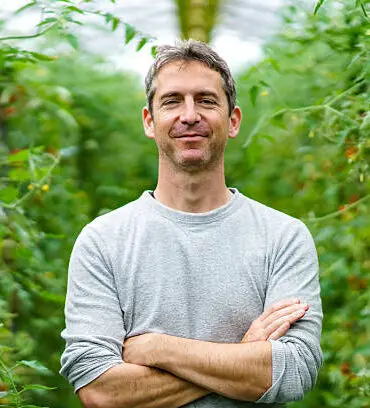
Suyash Dhoot, editor at SouthElMonteHydroponics.com, is a pioneering force in hydroponics. His expertise spans nutrient solutions and cutting-edge technology. Through meticulous editing, he elevates the site to a beacon of knowledge, offering invaluable insights. Dhoot’s dedication shapes a greener, more efficient future for agriculture.



